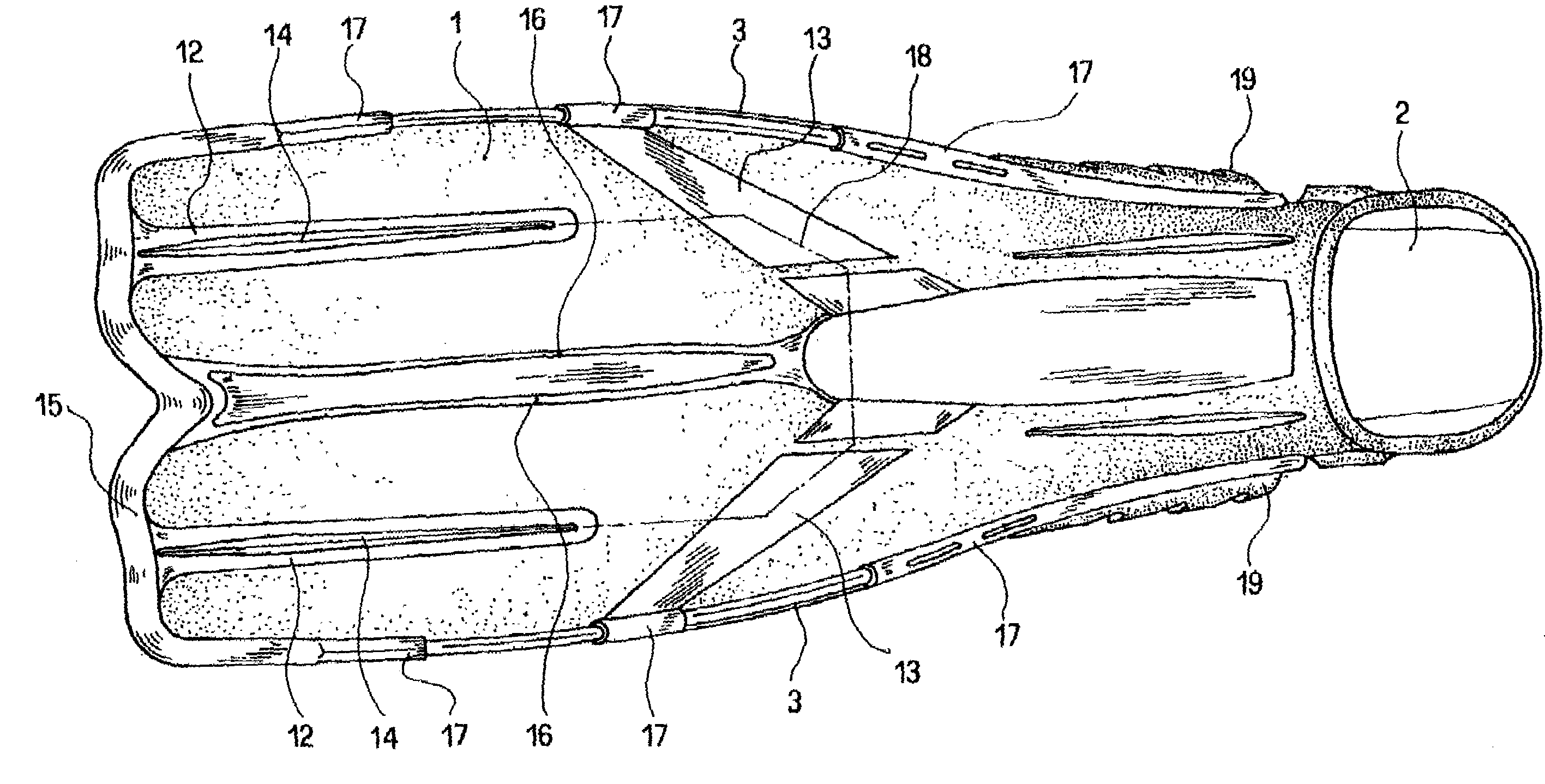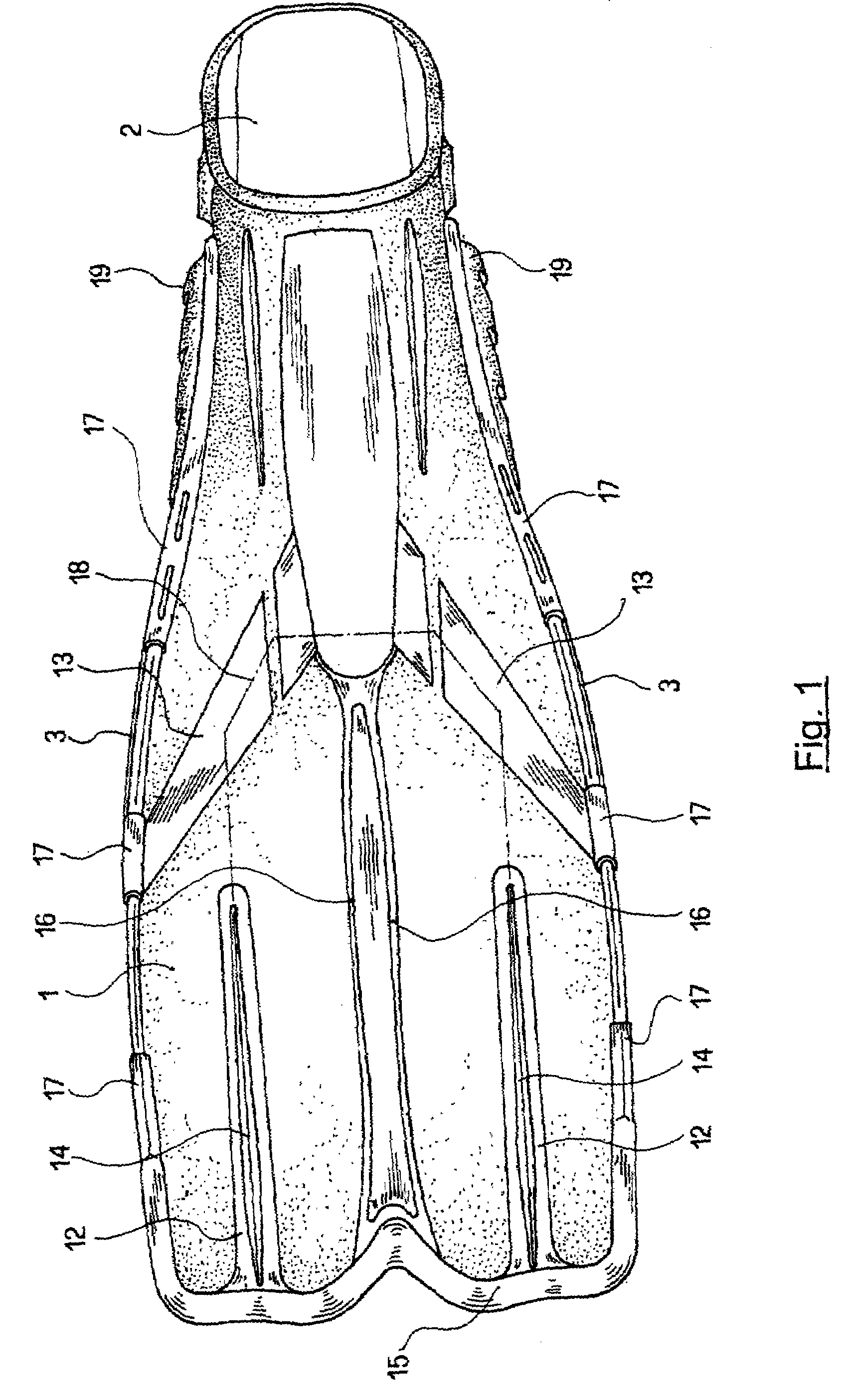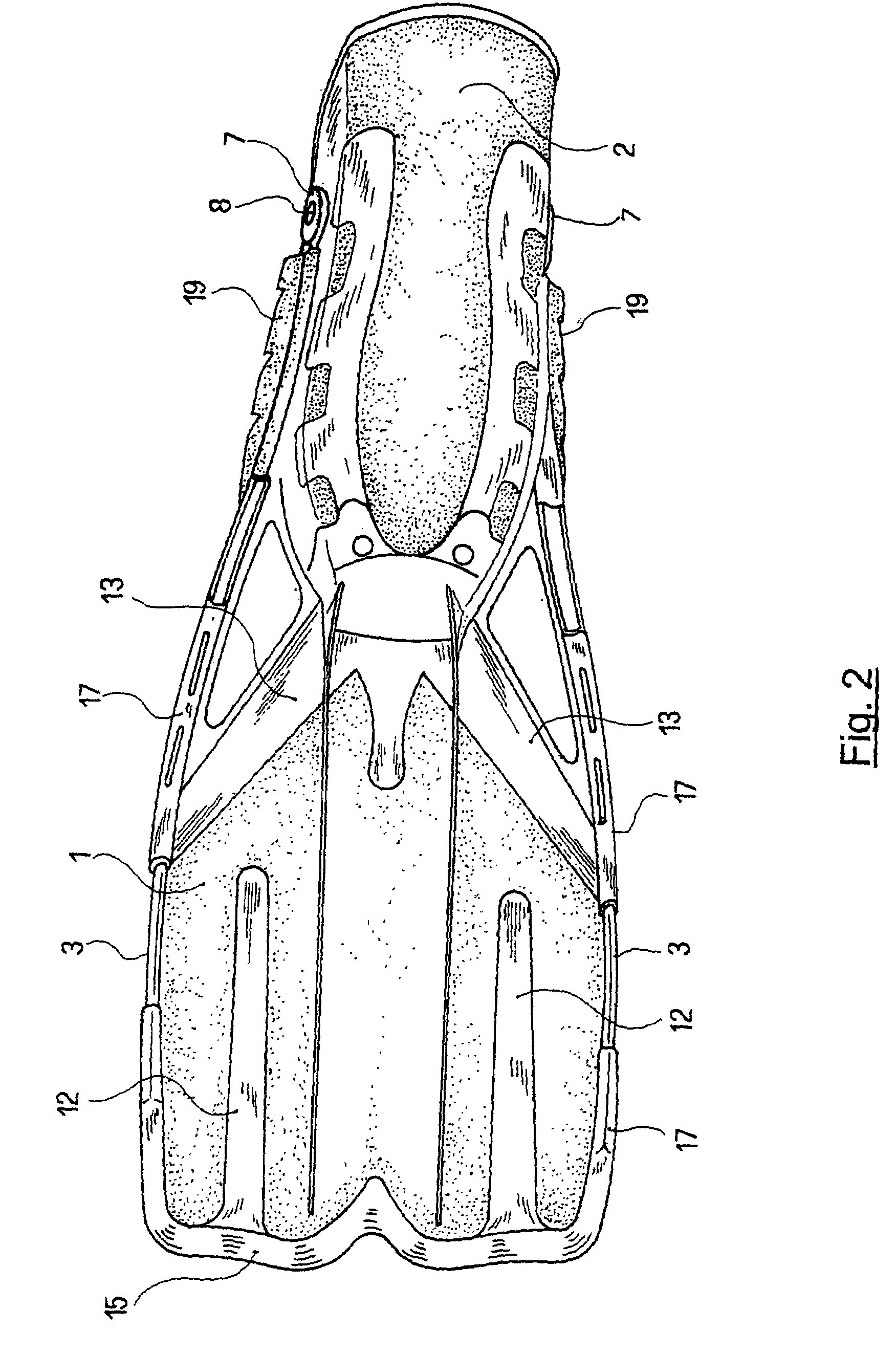Differentiated rigidity swimming fin with hydrodynamically designed rearward shoe strap connection
a technology of hydrodynamic design and swimming fins, applied in swimming, swimming fins, sport apparatus, etc., can solve the problems of affecting the efficiency of conventional swimming fins, etc., and achieve the effects of improving propulsion efficiency, improving the structure of swimming fins, and limiting any encroachmen
- Summary
- Abstract
- Description
- Claims
- Application Information
AI Technical Summary
Benefits of technology
Problems solved by technology
Method used
Image
Examples
Embodiment Construction
[0019]Referring now to the drawings and, more particularly, to FIGS. 1–4, there is shown generally a specific, illustrative differentiated rigidity swimming fin with hydronamically designed rearward shoe strap connection. According to one aspect of the present invention, the fin comprises a paddle or blade 1 constructed of a relatively rigid material, a shoe 2 made of a relatively yielding material, and a plurality of generally lateral ribs 3, preferably two, extending along the edges of blade 1, both above and below the plane of the blade, and constructed of a material having rigidity characteristics intermediate between those of the blade and the shoe. Preferably, the fin is produced in three successive molding stages: First, the blade is molded, the resulting product being shown in FIG. 5; second, the lateral ribs are molded, so as to obtain the product shown in FIG. 6; and three, the shoe and the remaining parts of the flipper, made of a relatively yielding material, are molded ...
PUM
 Login to View More
Login to View More Abstract
Description
Claims
Application Information
 Login to View More
Login to View More - R&D
- Intellectual Property
- Life Sciences
- Materials
- Tech Scout
- Unparalleled Data Quality
- Higher Quality Content
- 60% Fewer Hallucinations
Browse by: Latest US Patents, China's latest patents, Technical Efficacy Thesaurus, Application Domain, Technology Topic, Popular Technical Reports.
© 2025 PatSnap. All rights reserved.Legal|Privacy policy|Modern Slavery Act Transparency Statement|Sitemap|About US| Contact US: help@patsnap.com



